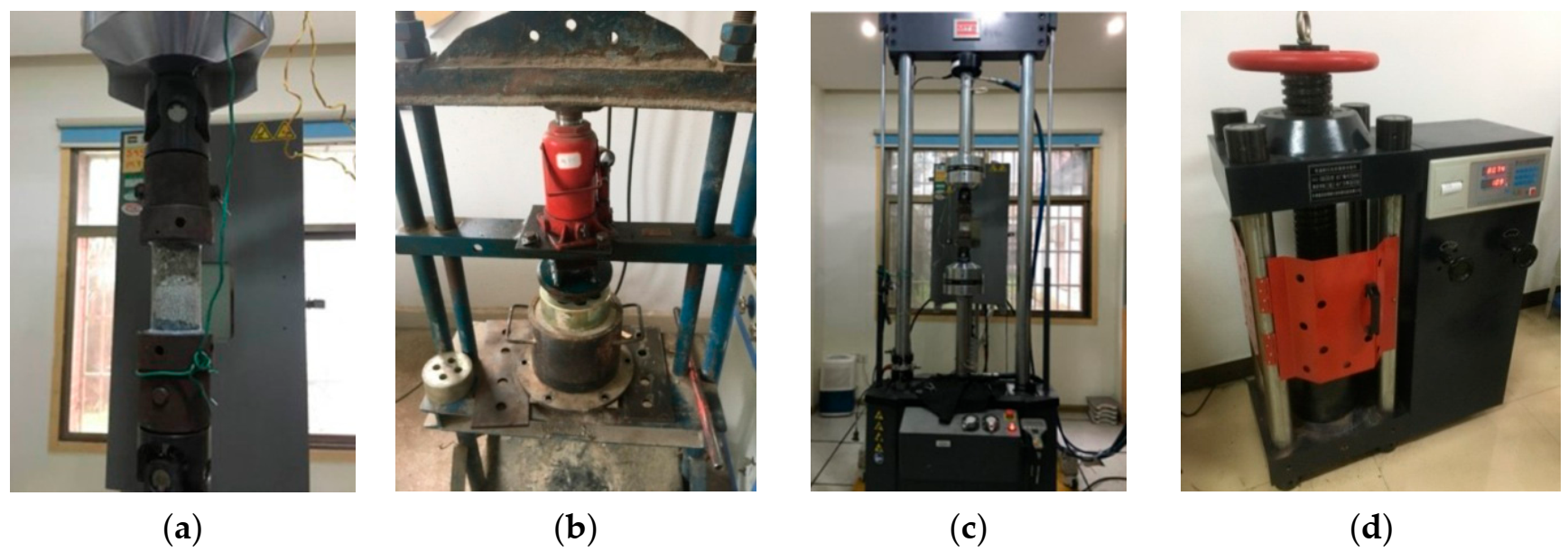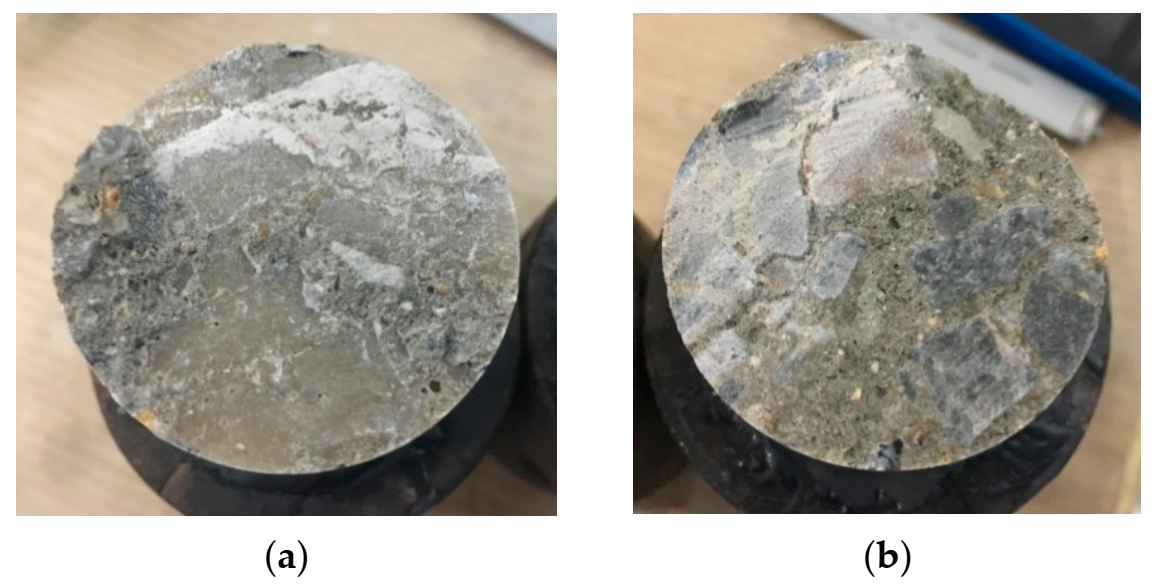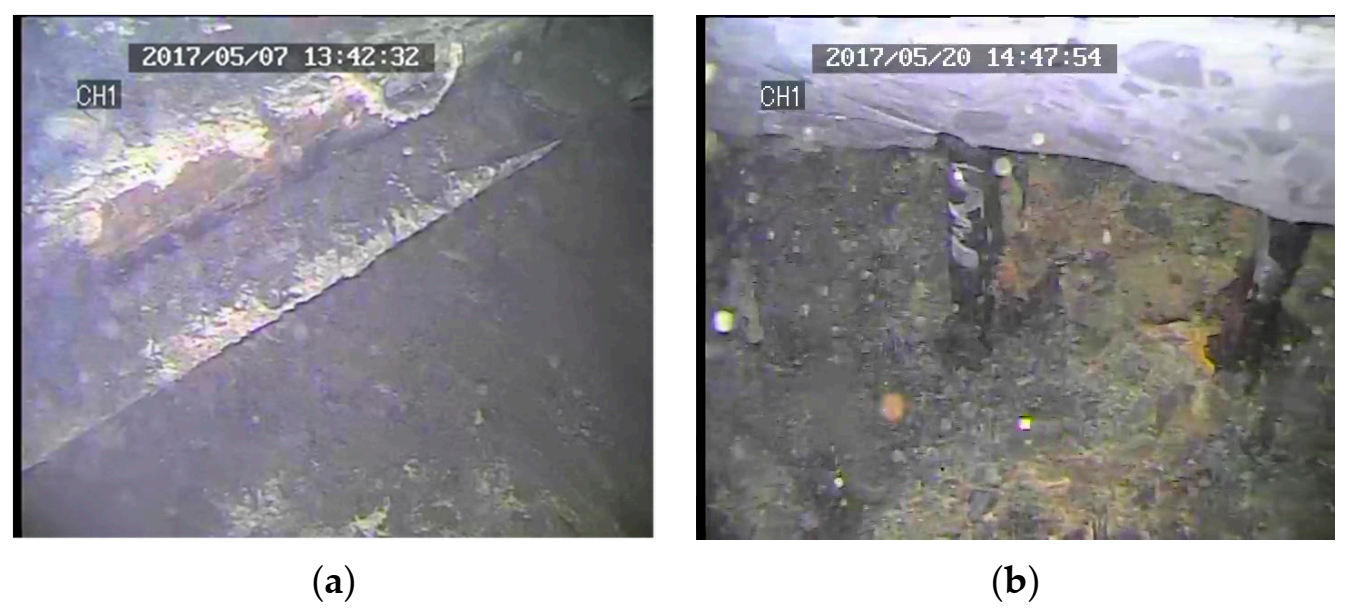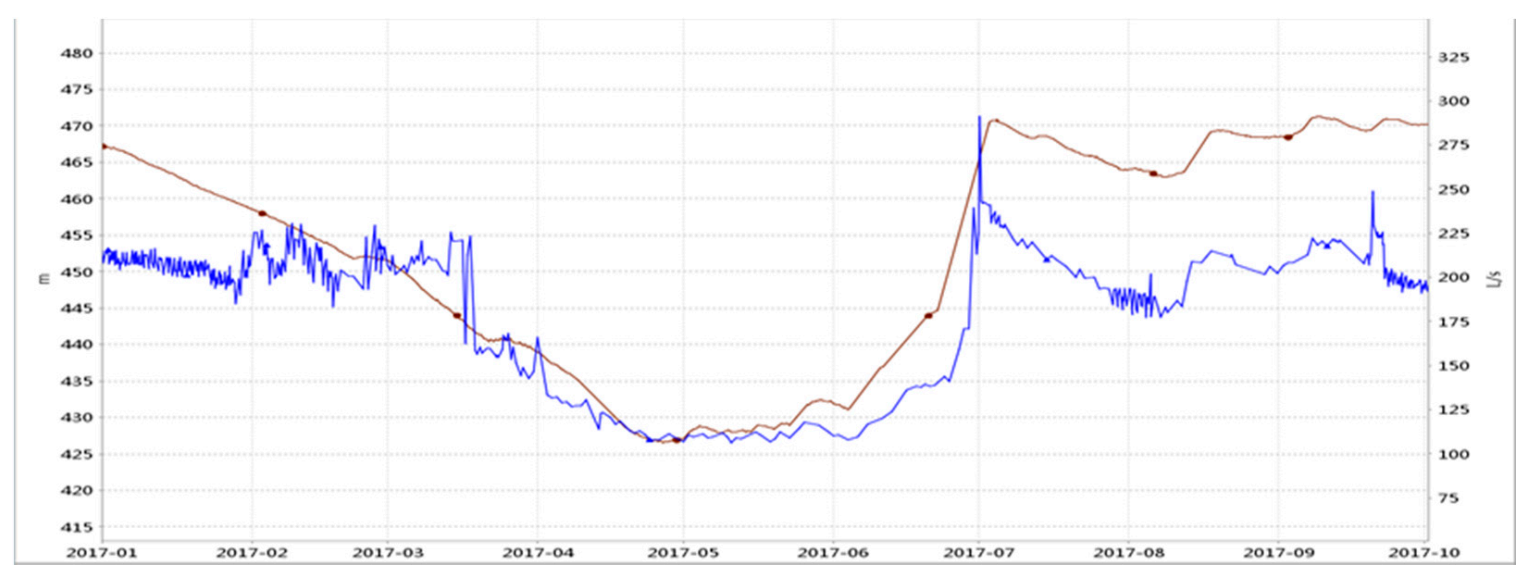1. Introduction
Concrete is an indispensable material in water conservancy project construction and is very important for the safe operation of the whole project. Since the concretes are often exposed to many different loads—such as temperature change, water flow and sandiness stream, alternation of wet and dry, and freeze–thaw cycles—its members and structures are likely to experience serious defects, such as weathering, erosion, and carbonization [
1,
2]. These damages gradually accumulate over time and affect the safe working and service life of hydraulic structures [
3]. Cracking is one of the most significant causes of deterioration in the durability of concrete structures [
4,
5], particularly for concrete in aqueous environments [
6,
7], where the working environment is bad. They need to be repaired in time after defects occur, otherwise they will have a serious impact on the safe use and durability of the whole structure [
8]. According to an existing study [
9], it is very time-consuming and significantly affects the economic efficiency to repair the cracks by emptying water; therefore, a proper material for repairing the underwater cracked concrete without water-emptying is needed.
Numerous studies have reported that the dispersion of nano-materials can significantly improve the mechanical and rheological properties of concretes [
10,
11,
12]. Among various kinds of nano-materials, silica nanoparticles (SNs) and their derivatives are regarded as attractive candidates for reinforcing cement composites due to their high purity and specific surface area [
13,
14]. The SNs is also abundant and easy to produce. Miricioiu et al. [
15,
16] reported that the SN can be prepared from coal fly ash. Jamshidi et al. [
17] pointed out that dispersing SNs into cement paste could lead to an increase in cohesion, plastic viscosity, and yield stress. Potapov et al. [
18] demonstrated that dispersing SNs could reduce the pore connectivity and increase the pore refining in cement mixtures, which significantly reduces the permeability of cement-based materials. The principle of enhancement is that dispersing SNs could extend pozzolanic reactivity and form a substantial amount of calcium–silicate–hydrate (C–S–H) gel [
19,
20]. Makarova et al. [
21] evaluated the effect of SNs on the mechanical properties of plain concrete. It was reported that the strength of concrete with SNs was increased by 84, 93, and 35% after 3, 7, and 28 days, respectively. Grzeszczyk et al. [
22] reported that dispersing SNs can improve the washout of concrete and has no significant effect on compressive strength. Khaloo et al. [
23] explored the performance of concrete dispersed with SNs in different specific surface areas. It was found that SNs with a lower specific surface area performed better than the higher one in compressive, splitting tensile strengths and electrical resistivity. Raheem et al. [
24] reviewed the effect of the incorporation of SNs in blended cement mortar and concrete. It was concluded that SNs have been shown to fill the micropores in concrete and improve its microstructural arrangement, thus producing high-density concrete.
Repairs of the underwater concrete structures are complicated construction works due to the constant dynamic action of water on these structures. It has been reported that a material used to repair concrete cracks in dry conditions is invalid in the underwater condition since it often fails to bond to the damaged concrete and adverse effects can occur with the reaction between the hardener and the water [
25,
26]. For example, the curing agent in epoxy mortar reacts with water and carbon dioxide, which leads to a sharp decrease in bond strength [
27]. It was reported that the underwater repairs had shown slightly inferior ultimate strengths and peak load displacement [
28]. Shi et al. [
29] investigated the effect of humidity on the mechanical properties of polymer-modified, cement-based repair materials. Results showed that the compressive strength decreased under different humidity-curing conditions. Li et al. [
30] prepared a new cementitious anti-washout grouting material (CIS), which consists of ordinary Portland cement, coagulant accelerator water glass, and flocculating agent xanthan gum. Liao et al. [
25] conducted a large-scale experimental study on bond behavior between polymer-modified cement mortar layer and concrete. Assaad et al. [
31] conducted a comprehensive research study to evaluate the effect of styrene-butadiene rubber (SBR) latex admixture on the washout loss and bond strength of underwater concrete designated for repair applications.
This literature review shows that SNs can effectively seal the cracks and pores within the structure of repairing materials, which is attributed to the good uniformity of SNs that make the microstructure of repairing materials more dense. However, previous studies of SNs on concrete mainly focused on the properties and microstructure; the study of the application of SNs for the underwater repair of cracked concrete has not been conducted yet. This study is carried out to address this issue. The effect of SNs on the repair of the underwater composite material was investigated experimentally. The performance of the SN-modified underwater composite-repairing material, including the deformability, impermeability grade, underwater bond tensile strength, and compressive strength, were measured for four different SNs additive ratios, and an optimum mass ratio of mortar, curing agent, and SN was achieved. Moreover, a hydropower station was repaired using the optimum mass ratio of SN-modified underwater composite-repairing material, and the economic and environmental benefits were analyzed. These results would be beneficial for broad underwater concrete repair applications, such as for dams of hydropower stations, piles in a marine environment, and sea walls.












